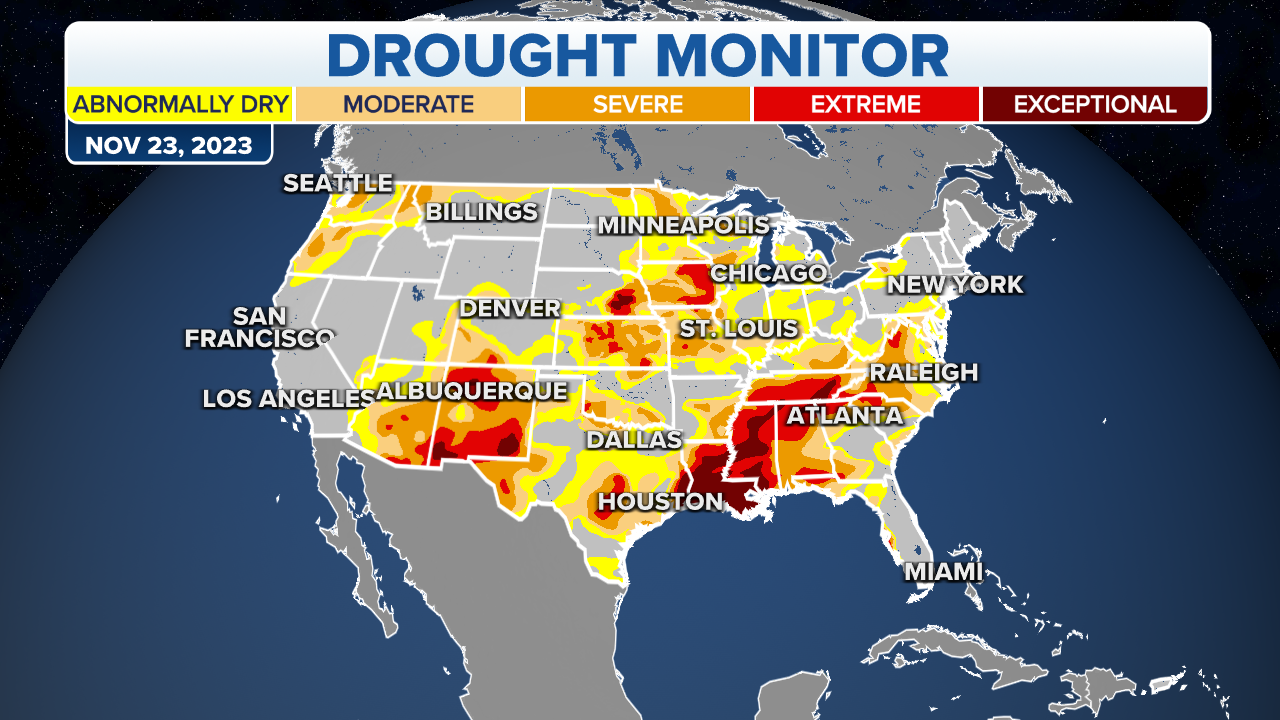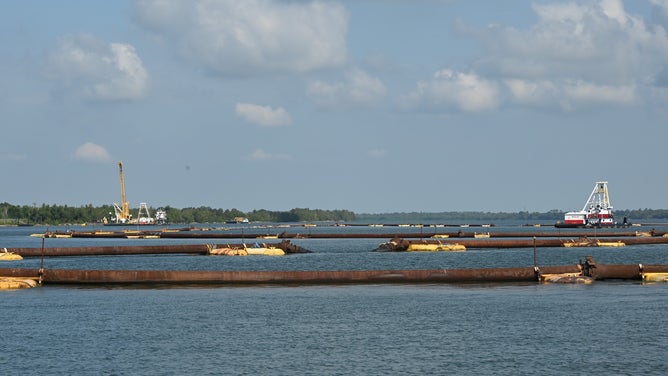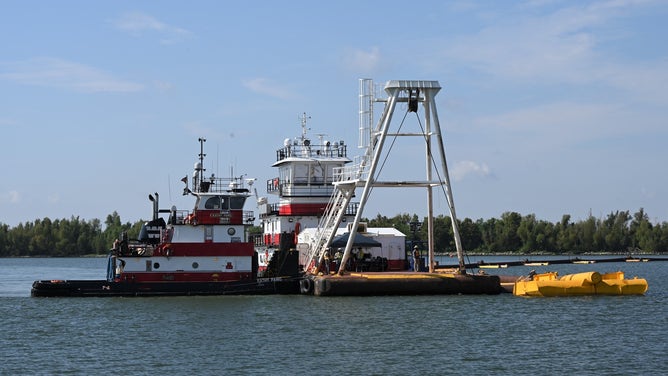New Orleans no longer under current threat of salt water intrusion from Mississippi River
Improving conditions are credited to increased water flows upstream along the Red River, and completion of a U.S. Army Corps of Engineers project to add sill to the lower Mississippi River, helping to slow salt water's intrusion.
New Orleans no longer under imminent threat of salt water intrusion into their drinking water supply
The U.S. Army Corps of Engineers' updated forecast shows that salt water is no longer forecast to reach harmful levels at New Orleans' water treatment plants as conditions improve along the Mississippi River.
NEW ORLEANS – New Orleans' water supply is no longer under a current threat of salt water intrusion as conditions improve along the Mississippi River, according to latest estimate by the U.S. Army Corps of Engineers released Thursday. Other water treatment plants closer to the Gulf of Mexico still remain under threat, but their estimated date of inundations have been pushed later.
A combination of drought, leading to low water levels, and high tides has helped allow seawater from the Gulf of Mexico to flow northward and impact drinking water supplies for communities in southeastern Louisiana.
"Sodium cannot be easily removed from drinking water and cannot be removed through boiling or conventional filtration like Brita filters or other common household store-bought water filters," the Louisiana Department of Health stated.
But now engineers estimate the salt water intrusion into Belle Chasse, Dalcour and St. Bernard will be delayed another two weeks into late October and early November. And while some salt water may still eventually reach treatment plants in New Orleans, it is no longer forecast to reach harmful levels.

(FOX Weather)
Improving conditions are credited to increased water flows along the Red River, and completion of a U.S. Army Corps of Engineers project to add sill to the lower Mississippi River, helping to slow salt water's intrusion.
"The combination of the sill augmentation and increased river flows has led to a regression of the saltwater wedge upriver from the sill," the USACE said. The latest measurements show the leading edge of the salt water intrusion regressed 1.4 feet between Oct. 5 and 9.
The USACE project added 25 feet of elevation to the river bed while heavy rains in Texas and Oklahoma have pushed more water into the Red River, which in turn is allowing for increasing flows into the Mississippi River.
BIDEN APPROVES LOUISIANA EMERGENCY AS MISSISSIPPI RIVER SALTWATER INTRUSION THREATENS DRINKING WATER
But officials are still dealing with salt water intrusion impacts for water treatment facilities closer to the Gulf, such as in Plaquemines Parish. Treatment facilities in Port Sulphur and Pointe A La Hache are currently experiencing impacts from saltwater intrusion.
Freshwater barges begin arriving at Plaquemines Parish
Earlier this month, the U.S. Army Corps of Engineers began barging fresh water from an upstream location to water treatment facilities in Plaquemines Parish to dilute the salinity content to levels safe for water treatment.
The initial barge load of 500,000 gallons was delivered to Port Sulphur Water Treatment Facility.
"As barges arrive at water treatment facilities, the fresh water will be transferred to storage or reservoir tanks and then mixed with salt water from the river to bring the chloride levels down below the threshold for treatment," the USACE said.
The USACE is working on the capability to deliver up to 36 million gallons of water per day if additional facilities are impacted by the saltwater intrusion on the Mississippi River.
Rain needed to increase Mississippi River flow
Significant rainfall in the lower Mississippi Valley would cause river levels to rise, which would slow or possibly even stop the intrusion.
Widespread rainfall events along the Mississippi River drainage basin do not appear to be in the cards as the U.S. transitions from the typical stormy summer weather pattern to the more docile fall.
Last week, Louisiana Gov. John Bel Edwards met with the Governor's Office of Homeland Security and Emergency Preparedness (GOHSEP), USACE and parish officials from Orleans, Jefferson, Plaquemines and St. Bernard to discuss the lower Mississippi River saltwater intrusion.
"The weather forecast indicates minimal rain for the next two weeks, and if there is any potential increase in the upper Mississippi Valley, it will still take some time to reach our state," Edwards said. "The mitigation measures in place are still very necessary, and we are continuing to study all additional options that can be used to address this ongoing situation."

(FOX Weather)
President Joe Biden approved a federal emergency declaration for the state, as stores and government facilities stocked up on bottled water and other resources.
The Sewerage and Water Board of New Orleans has maintained that water in the city remains safe and residents do not need to adjust usage.
"The most important thing for residents at this time is to stay informed and remain calm," New Orleans Mayor LaToya Cantrell stated. "As we continue monitoring this situation, we will communicate all necessary information to residents as it becomes available."



